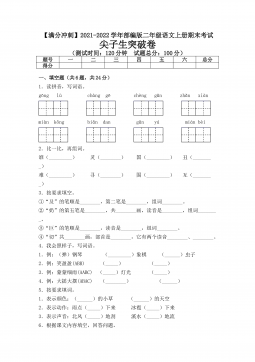人体头部三维建模和测量系统的设计与实现
人体头部三维建模和测量系统的设计与实现摘要图像三维表面重建是指从物体不同的视角拍摄物体二维照片,并根据这些照片重建出物体具有真实纹理的三维模型。这项技术在虚拟旅游、电子商务等方面均有重要的应用价值。本文是通过图像三维表面重建技术重建人体头部的三维模型并设计三维模型的测量系统,作为黑黛中国公司为患者定制假发的辅助工具。本文采用基于物体表面视锥相交的三维重建方法,对物体进行360°图像采集,通过采集的图像重建物体的三维模型。物体三维重建主要包括图像目标分割、相机标定、三维重建、真实纹理映射等,本文的工作主要分为以下五部分:第一部分是图像分割,本文采用过分割的感知合并算法进行图像分割。边缘连接时定义...
相关推荐
-
5 二年级语文上册期末教学质量检测试卷(含答案)部编版VIP免费

 2024-11-19 12
2024-11-19 12 -
4 二年级语文上册期末教学质量检测试卷(含答案)部编版VIP免费

 2024-11-19 40
2024-11-19 40 -
3 二年级语文上册期末教学质量检测试卷(含答案)部编版VIP免费

 2024-11-19 20
2024-11-19 20 -
2 二年级语文上册期末教学质量检测试卷(含答案)部编版VIP免费

 2024-11-19 29
2024-11-19 29 -
1二年级语文上册期末教学质量检测试卷(含答案)部编版VIP免费

 2024-11-19 16
2024-11-19 16 -
【满分冲刺】2021-2022学年二年级语文上册期末考试尖子生突破卷 部编版(含答案)VIP免费

 2024-11-19 75
2024-11-19 75 -
【精品】二年级上册语文试题-期中考试模拟卷-部编版(含答案)VIP免费

 2024-11-19 80
2024-11-19 80 -
【冲刺百分】二年语文上册期末冲刺模拟试卷(B) (有答案)VIP免费

 2024-11-19 23
2024-11-19 23 -
【冲刺百分】二年语文上册期末冲刺模拟试卷(A) (有答案)VIP免费

 2024-11-19 16
2024-11-19 16 -
第六单元试题(B)二年级上册语文(部编含答案)VIP免费

 2024-11-19 20
2024-11-19 20
相关内容
-

【满分冲刺】2021-2022学年二年级语文上册期末考试尖子生突破卷 部编版(含答案)
分类:中小学教育资料
时间:2024-11-19
标签:无
格式:DOC
价格:5 积分
-

【精品】二年级上册语文试题-期中考试模拟卷-部编版(含答案)
分类:中小学教育资料
时间:2024-11-19
标签:无
格式:DOC
价格:5 积分
-

【冲刺百分】二年语文上册期末冲刺模拟试卷(B) (有答案)
分类:中小学教育资料
时间:2024-11-19
标签:无
格式:DOCX
价格:5 积分
-

【冲刺百分】二年语文上册期末冲刺模拟试卷(A) (有答案)
分类:中小学教育资料
时间:2024-11-19
标签:无
格式:DOCX
价格:5 积分
-

第六单元试题(B)二年级上册语文(部编含答案)
分类:中小学教育资料
时间:2024-11-19
标签:无
格式:DOC
价格:5 积分






